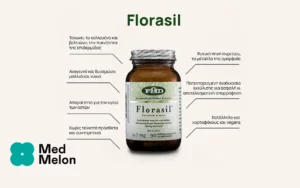Scientific Names of Soya Lecithin: Glycine max (L.) Merrill [Fam. Fabaceae]
Forms:
GMO (Genetically Modified Organism) free Soy Lecithin obtained from GMO free soybeans
Traditional Usage:
– Lowering LDL Cholesterol
Overview:
Soybean, Glycine max, is a legume in the plant family, Fabaceae. Soy lecithin is extracted from soybeans, the same crop used to produce soy sauce and tofu (soy bean curd). Lecithin is a waxy substance commonly used as an emulsifier in margarine and other foods. Commercial lecithins come mainly from soybeans. Soy lecithin is rich in linoleic acid Omega-6 Essential Fatty Acids (40.2%) and also contains oleic acid (Omega-9 monosaturated fats) (10.6%), linolenic acid omega-3 Essential Fatty Acids (5.1%), Vitamin E (5.2mg /100g), phosphatidyl choline, linoleate and triglycerides. Traces of protein are also found in soy lecithin, though these levels have been found to be non-allergenic for people allergic to soybeans. Soy lecithin is known as a remedy for high cholesterol. In addition to lowering moderately elevated blood cholesterol levels, soy lecithin is used to relieve symptoms of liver disease such as loss of appetite and a feeling of pressure in the area of the liver. In Asian medicine, the product is considered a remedy for chest fullness, fevers, fidgeting, and headache. Its effectiveness for these problems has not, however, been verified. Soya lecithin binds chemically with cholesterol, thus reducing the amount of pure cholesterol in the bloodstream. Studies indicate that the cholesterol-lowering effect of soy lecithin, and in particular, its anti-atherogenic properties may be attributed largely but not solely to its linoleate content. Soy lecithin is also used safely in products to administer nutrients intravenously to critically ill patients. Lecithin helps to maintain healthy digestive function, promotes the elimination of wastes and may aid in the treatment of constipation, especially if due to poor fat metabolism. Studies indicate a stimulatory effect of soy lecithin rich in omega-6 fatty acids on human blood platelet adhesiveness and therefore soy lecithin should be taken as part of a balanced EFA diet.
Active Ingredients:
Total lipid (fat) 100g/100g; Carbohydrate, by difference 0.0g; Fiber, total dietary 0.0g; Ash 0g; Vitamin E (ATE) 5.2mg/100g; Lipids: Total saturated fatty acids 15.0g/100g: 16_0=12.0g/100g 18_0=2.9g/100g; Total monounsaturated fatty acids 11.0g/100g: 16_1=0.4g/100g; 18_1=10.6g/100g; Total polyunsaturated fatty acids 45.3g/100g: 18_2=40.2g/100g; 18_3=5.1g/100g. Soy lecithin also contains a complex mixture of acetone-insoluble phosphatides including chiefly, phosphatidyl choline, phosphatidyl ethanolamine, linoleate and other substances such as triglycerides. Traces of protein are also found in soy lecithin products. (Information taken from The National Agriculture Library’s USDA Nutrient Database for Standard Reference at http://www.nal.usda.gov).
Suggested Amount:
A typical dosage is 1200mg of soy lecithin with each meal, or as prescribed by your health care practitioner. Large amounts of coffee may deplete the body stores of inositol and so increase lecithin requirements. Soy lecithin, rich in omega-6 and 9 fatty acids but low in important omega-3 EFAs, should be taken as part of a balanced oil blend.
Drug Interactions:
None known
Contraindications:
Some individuals may have difficulty digesting foods with fat in them. Symptoms include nausea, gastrointestinal disturbance and abdominal bloating when fats are consumed. These symptoms are often due to poor emulsification or metabolism of fats. Normally the gall bladder produces bile to help with fat metabolism but when bile production is inadequate, discomfort follows fat ingestion. Individuals with gall bladder removal may notice these symptoms.
Side Effects:
At therapeutic dosages, soy lecithin is well tolerated. Excessive consumption may produce nausea. Soy lecithin occasionally causes mild digestive upsets, such as stomach pain, loose stools, and diarrhea.
References:
Andrioli G, Carletto A, Guarini P, Galvani S, Biasi D, Bellavite P, Corrocher R. 1999. Differential effects of dietary supplementation with fish oil or soy lecithin on human platelet adhesion. Thromb Haemost 1999 Nov;82(5):1522-7
Awazuhara H, Kawai H, Baba M, Matsui T, Komiyama A. 1998. Antigenicity of the proteins in soy lecithin and soy oil in soybean allergy. Clin Exp Allergy 1998 Dec;28(12):1559-64.
Sirtori CR, Zucchi-Dentone C, Sirtori M, Gatti E, Descovich GC, Gaddi A, Cattin L, Da Col PG, Senin U, Mannarino E, et al. 1985. Cholesterol-lowering and HDL-raising properties of lecithinated soy proteins in type II hyperlipidemic patients. Ann Nutr Metab. 1985;29(6):348-57.
Widhalm K, Kohl S, Hammerle A. 1996. The clinical application of two newly developed lipid emulsions (Solipid 20% S&E) in critically ill patients. Infusionsther Transfusionsmed 1996 Feb; 23(1): 8-12.
Wilson TA, Meservey CM, Nicolosi RJ. 1998. Soy lecithin reduces plasma lipoprotein cholesterol and early atherogenesis in hypercholesterolemic monkeys and hamsters: beyond linoleate. Atherosclerosis 1998 Sep; 140(1):147-53.




